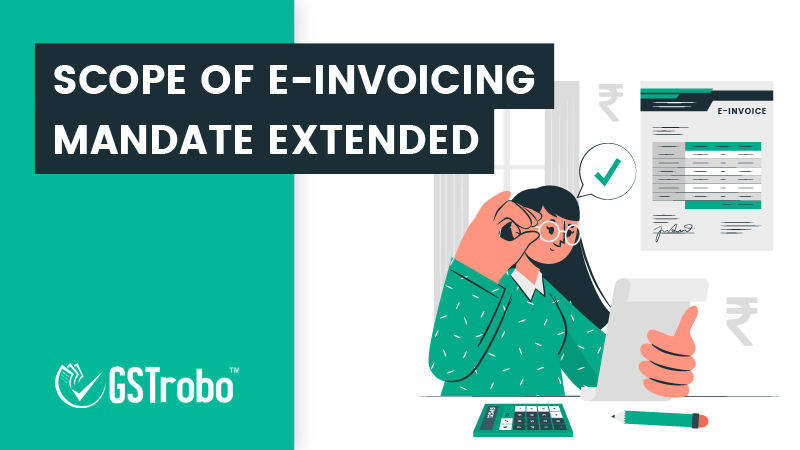Scope of E-Invoicing Mandate Extended
As per the recent mandate, e-invoicing will be implemented for all businesses whose aggregate turnover exceeds INR 20+ Crores from April 1, 2022. So, this is the right time that small and medium businesses brace up for this change and choose the best e-invoicing software that provides issuance and receipt of e-invoices seamlessly.

E-Invoicing Timeline
E-invoicing was first implemented in India on 1st October 2020 to all the large taxpayers whose aggregate turnover was INR 500 Crores and who are dealing in B2B and export supplies.
Further, in October 2020, the Finance Secretary Mr. Ajay Bhushan Pandey announced that the government is planning to implement an e-invoicing system for all those taxpayers whose annual turnover is INR 100 crores and more starting 1 January 2021. This turned into an official announcement on 10th November 2020 the CBIC confirmed that taxpayers whose aggregate turnover exceeds INR 100 Crores need to mandatorily follow the provisions of e-invoicing from 1st January 2021.
Recently, the CBIC has clarified that e-invoicing will be implemented to all B2B and export transactions from 1st April 2022 for INR 20+ Crores taxpayers.
It shall be noted that airlines, banks, armed forces, insurance companies, and telecom service providers are exempted from this e-invoicing mandate.
Requirements for Submission of E-invoices
As per the provision of e-invoicing provisions, e-invoices should be first uploaded to the Invoice Registration Portal (IRP) in JSON format. Once the e-invoice is uploaded, the IRP carries out certain validation of the e-invoice before issuing invoice reference number (IRN) and signed QR code. Here is the list of validations that are carried out by the IRP:
- Details in every mandatory field: To check whether the person who has uploaded the invoice has not missed any required field at the time of generating the invoice;
- Supplier’s GSTIN- To know whether the GSTIN of the supplier mentioned in the e-invoice is valid;
- Buyer’s GSTIN- To know whether the GSTIN of the buyer mentioned in the e-invoice is valid;
- Invoice number: To verify whether there is an invoice with the same invoice number in the GST System);
- Financial year: To know the fiscal year in which such invoice is generated and issued;
If the IRP response is positive, the invoice is signed electronically and IRN is assigned along with the signed QR code by the IRP. IRN and Signed QR codes help the buyer and GST officers to validate the authenticity of e-invoices.
In a case, if the IRP response is negative, an error message is sent furnishing the reason for rejection.
How Can GSTrobo® Help You?
GSTrobo® – a division of Binary Semantics is one of the leading ASP-GSP who provides industry-leading GST compliance software such as GST, e-way bill, and e-invoicing software. These solutions not only seamlessly integrates with all the ERPs but also automates most of your GST compliance.
